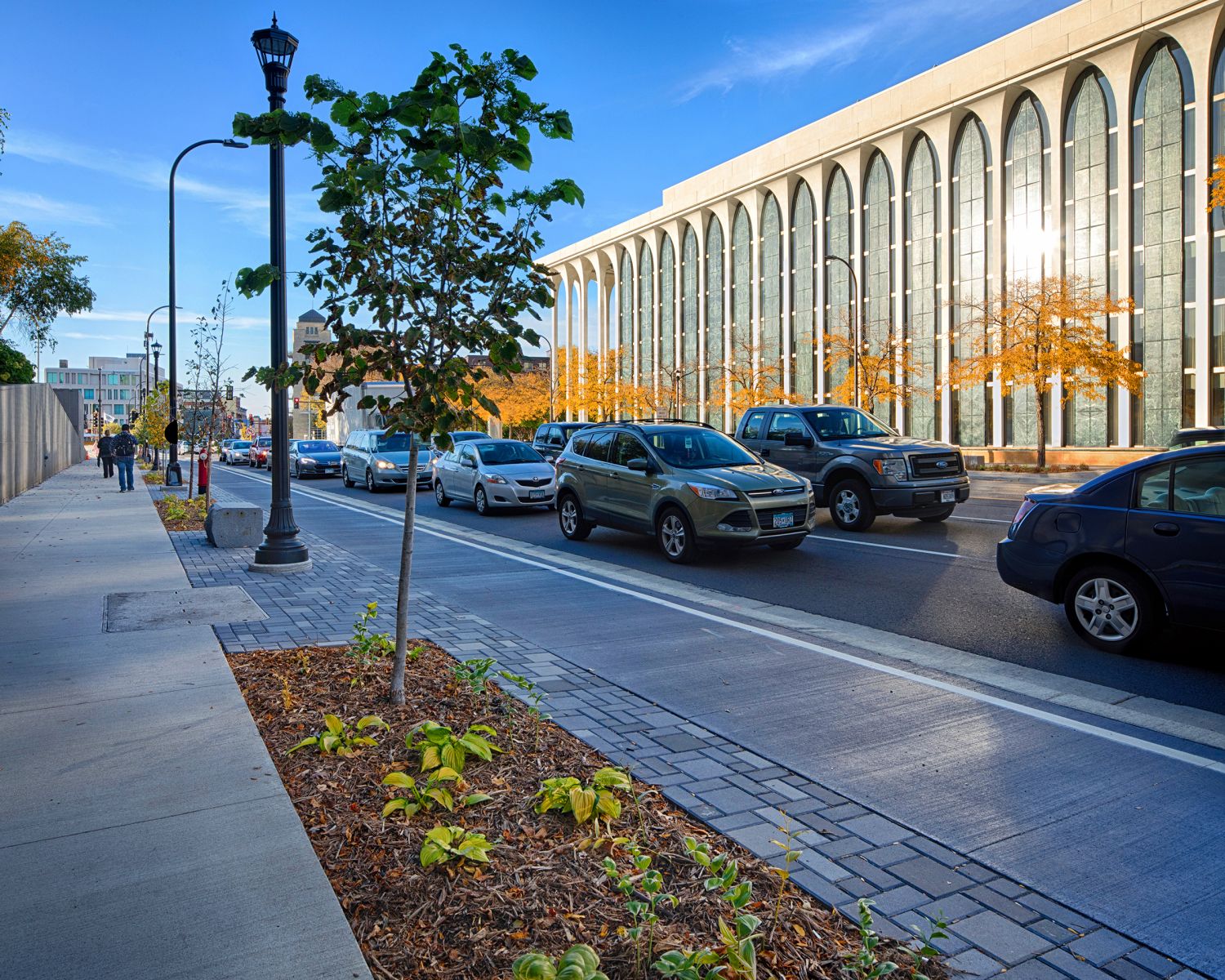Latest News
What is the value of a strong downtown?
July 29, 2019
By Beth Elliott, Stantec
My office moved downtown earlier this year. This meant a lot to me because prior to joining Stantec, I served as the City of Minneapolis’s downtown planner for more than a decade. This move had everything to do with the idea that to design with community in mind, we need to be in the heart of that community. And we’re not the only ones who see downtowns as central to their communities.
The International Downtown Association (IDA) released The Value of U.S. Downtowns and Center Cities, a report that gives us an idea of what makes a truly successful downtown. IDA’s members—generally business improvement districts or downtown partnerships—are grounded in more than 2,500 North American downtowns. This puts IDA in a perfect position to analyze what makes for a thriving downtown with intrinsic value to its region.
The IDA measured the performance of 24 downtowns across five key areas—economy, inclusion, vibrancy, identity, and resilience. One of the downtowns happens to be the one I know best—Minneapolis. Here’s my quick take on the five principles:
- Inclusion—Downtowns are the hubs of their regions. They are the epicenters of transportation options, places of diverse entertainment and in-demand housing, and usually a region’s economic engine. While not all downtowns are the same, they all tend to put into sharp focus the challenges of homelessness, perceptions of crime, shifts in retail buying with vacant storefronts, and a lack of coordinated youth activities. The study found that 29% of residents in downtowns are middle-income—a statistic that combats the notion that only wealthy or very low-income people live downtown. As downtowns add more and more expensive new housing, cities need to work to protect housing stock that maintains the diversity of options.
- Economy—IDA found that downtowns constitute an average of just 3% of city land area but yield much higher proportions of overall assessed value. Not only is a downtown’s footprint valuable, it also generates significant tax revenue. In my work as a planner for downtown Minneapolis, I viewed this as an opportunity to design regulations flexibly for changing markets, as well as a public realm to catalyze new development. Downtowns have an opportunity to test new models for building up, mixing uses, and eliminating barriers to redevelopment. As a result, the added tax revenue bolsters a city’s ability to support neighborhoods outside of the downtown.
- Vibrancy—On average, the populations of the downtowns studied grew by 27% from 2010 to 2016, compared to only 7% percent of growth citywide. The renewed interest in downtown living of recent years has brought people closer to work, entertainment, transit, and shopping. They also trade life in less-dense neighborhoods or suburbs for an opportunity to be among more people. Increasing the density in an area drives amenities for the collective whole—retail, transit options, parks, and then more housing. This, in turn, translates into better access and opportunities for everyone.
- Identity—Most downtowns are the origins of the city—the place where people first set up businesses and put down roots. Like Minneapolis, many cities began next to water and grew organically. As such, downtowns usually hold the lion’s share of elements that establish a city’s identity—civic places and spaces, historic buildings, museums, parks, public art. A downtown builds its brand on its status as a unique place to live, work, and visit.
- Resilience—A region builds resilience to economic, social, and environmental shocks by taking deliberate action. Center cities have unusual strengths—economic performance, diversity, density, and supply of resources—that help them to weather economic downturns and other kinds of disruptions better than other neighborhoods. The cities that will prove especially resilient, however, are those that support residents that lack the economic and social resources to weather personal storms.
My philosophy on planning, especially in a downtown, is embedded in the concept of access—access to daily services, to diverse housing options at all income levels, to mobility choices that take you where you need to go, and to the amenities that make our lives brighter. If we plan for and deliver these things, all people can thrive.
About Beth Elliott
Beth Elliott is a senior urban planner at Stantec and has two guiding principles: planning needs to be accessible, and the outcomes should elevate everyone. As the previous downtown planner for the City of Minneapolis, Beth has worked on several regionally significant projects in her 15-year career. Her work has included downtown planning and revitalization, funding and implementation, and public participation methods.

What's New
-

Young Professionals Spotlight
March 25, 2024
-

APWA-MN Education Programs
March 25, 2024
-
Apply for the Young Professionals Stipend: Attend PWX Atlanta
February 23, 2024



